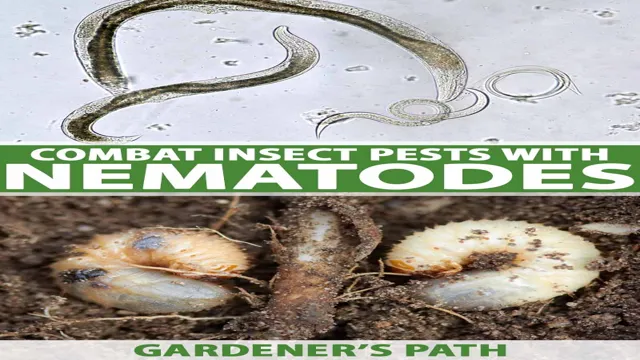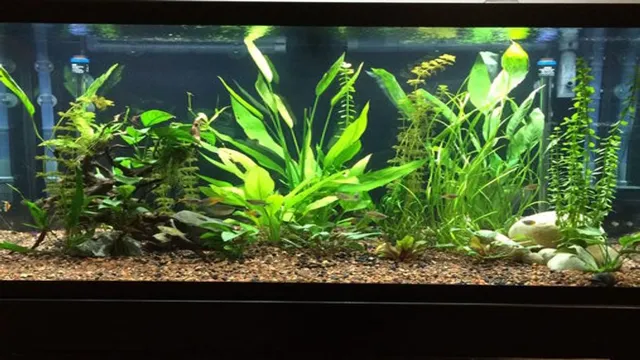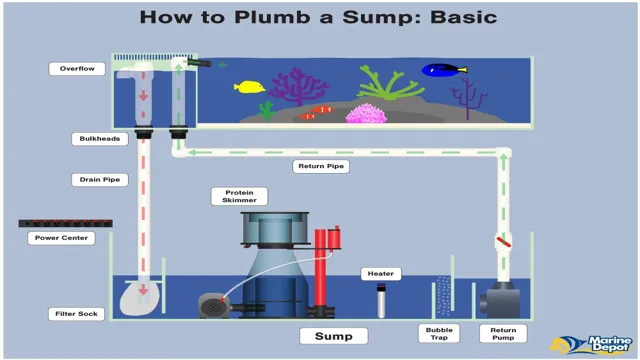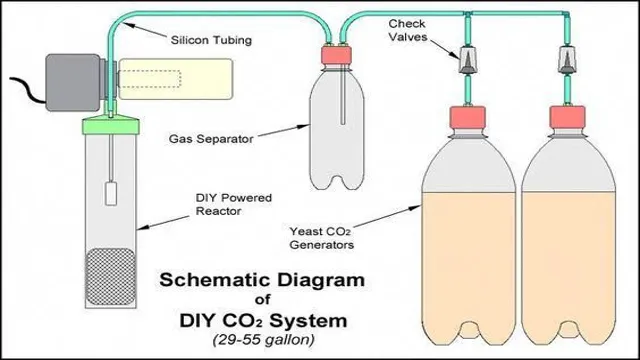Are you frustrated with nematodes causing havoc in your aquarium? These tiny, worm-like creatures can multiply rapidly and cause damage to both plants and fish. But fear not, there are ways to get rid of them and prevent future infestations. In this blog post, we’ll explore the different methods of killing nematodes in aquariums and how to keep your aquatic environment healthy and balanced.
Just like weeds in a garden, nematodes can quickly take over if left unchecked. So, let’s dive in and learn how to combat them effectively!
Identifying Nematodes
If you’re dealing with nematodes in your aquarium, you may be wondering how to get rid of them. But before you can do that, you need to be sure that nematodes are actually the problem. Identifying nematodes isn’t always easy, as they’re often too small to see with the naked eye.
However, there are a few signs that can point to their presence. If you notice cloudy or murky water, slimy patches on the glass, or an accumulation of detritus on the bottom of your tank, nematodes may be the culprit. To confirm their presence, you can take a sample of water or detritus and examine it under a microscope for small, worm-like organisms.
Once you’re sure that nematodes are the problem, you can start working on getting rid of them. Using a combination of water changes, gravel vacuuming, and medication can help to kill nematodes in your aquarium and restore the health of your precious fish.
Symptoms of Nematode Infestation
Nematodes are microscopic worms that can infest a range of plants, causing damage to their roots and leading to stunted growth or even death. Identifying the presence of nematodes can be tricky, but there are some tell-tale signs to look out for. One common symptom of nematode infestation is the appearance of galls or lesions on the plant’s root system.
These can be small and difficult to spot, so it’s important to inspect roots carefully when checking for nematodes. Another sign is the appearance of yellowing or wilting leaves, which can indicate that the plant is struggling to absorb enough nutrients due to root damage. In severe cases, the entire plant may even start to turn brown and die off.
To identify nematodes, it’s important to dig up the plant and inspect its roots carefully. If you spot any signs of damage or abnormal growth, it’s important to take action quickly to prevent further infestation and protect other plants in the area. By taking steps to monitor and control nematode populations, gardeners can help ensure the health and vitality of their plants over the long term.
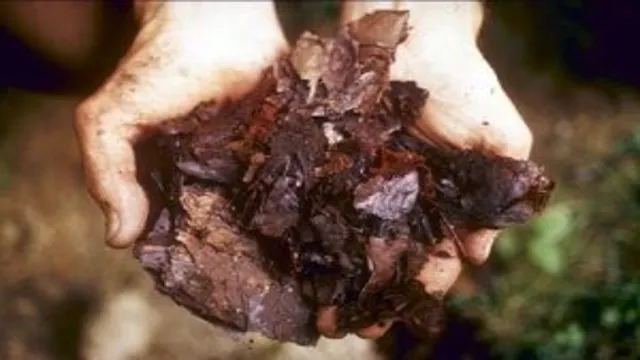
Types of Nematodes in Aquariums
When it comes to identifying nematodes in your aquarium, there are a few tell-tale signs to look out for. These tiny worms can be difficult to spot with the naked eye, but if you notice white or brownish stringy matter floating around in the water, chances are you have nematodes. Another way to identify them is to do a sediment test.
Take a sample of the substrate from the bottom of your aquarium and place it under a microscope. If you see small, worm-like creatures wriggling around, then you have nematodes. There are different types of nematodes that can inhabit aquariums, including free-living nematodes and predatory nematodes that eat other microorganisms.
While nematodes can be a sign of a healthy ecosystem, too many can cause harm to aquatic plants and other organisms in the tank. It’s best to keep a close eye on their population and take action if necessary.
Preventing Nematode Infestations
Aquarium hobbyists often face nematode infestations, which can lead to fish deaths and deteriorating water quality. However, prevention is the best defense against these tiny worms. One way to prevent nematodes from making themselves at home in your aquarium is by regularly maintaining the tank environment. (See Also: How to Clean Algae off Artificial Aquarium Plants: Efficient Tips and Tricks)
Avoid overfeeding your fish and regularly clean out uneaten food. You can also add live plants to the aquarium, as they can reduce the risk of nematode infestations by providing competition for resources. Quarantining new fish and plants before introducing them to the tank is also crucial in preventing potential nematode outbreaks.
If you do find yourself with a nematode infestation, there are chemical treatments available, but they can harm beneficial bacteria and other organisms in the aquarium. It is always best to try natural methods such as increasing water changes, vacuuming the substrate, and increasing water flow before resorting to chemicals. By practicing good aquarium maintenance and prevention methods, you can help keep your aquatic pets happy and healthy.
Maintaining Good Aquarium Hygiene
Maintaining good aquarium hygiene is crucial for the health and well-being of your aquatic pets. One of the most common issues that aquarium keepers face is nematode infestations. These tiny worms can wreak havoc on your tank, causing illness and even death in your fish.
To prevent nematode infestations, it’s important to keep your aquarium clean and well-maintained. Regular water changes, filter cleanings, and gravel vacuums can help remove any excess waste or debris that may be harboring nematodes. Additionally, avoid overfeeding your fish and be careful when introducing new plants or animals into your tank.
By taking these simple steps to maintain good aquarium hygiene, you can keep your fish healthy and thriving for years to come.
Quarantine New Fish and Plants
Keeping your aquarium free from nematode infestations is essential for the health and happiness of your fish and plants. One of the best ways to prevent these tiny worms from taking hold is to quarantine any new fish or plants you introduce to your tank. This means isolating them in a separate tank for a period of time before adding them to your main aquarium.
During this time, you can observe your new arrivals for any signs of infection or disease. If you notice anything unusual, you can treat the problem before introducing the organisms to your main tank. This simple practice can prevent nematode infestations from spreading to your existing fish and plants, and keep your aquarium thriving for years to come.
Remember, prevention is always better than the cure!
Avoid Overfeeding
Nematode infestations can cause a lot of inconvenience in your garden or lawn. These pests can destroy your plants and make it difficult to maintain a healthy landscape. To avoid nematode infestations, it’s essential to prevent overfeeding.
Overfeeding your plants can lead to an increase in nematode populations since they feed on soil microorganisms. Therefore, it’s important to avoid excessive fertilizer use and stick to a nutrient management program. By providing your plants with the right amount of nutrients, you can prevent the growth of nematodes and keep your garden healthy. (See Also: How to Make a Peace Lily Aquarium: A Step-by-Step Guide)
Additionally, consider adding compost to your soil to improve its health and reduce the likelihood of nematode infestations. Remember, prevention is always better than cure when it comes to nematode infestations. So take the necessary precautions and enjoy a beautiful, healthy garden all year round.
Treating Nematode Infestations
If you’re dealing with nematode infestations in your aquarium, it’s essential to take action quickly to prevent further harm to your fish. One effective way to kill nematodes is by using a combination of medications. Levamisole, fenbendazole, and praziquantel are some of the drugs commonly recommended for treating nematodes in aquarium fish.
These medications work by paralyzing or killing the worms, leading to their expulsion from the fish’s body. To use the medication, you’ll need to dissolve it in the aquarium water and keep the concentration at the correct level for the recommended period. Additionally, maintaining proper aquarium hygiene, such as frequent water changes, proper feeding, and cleaning of the gravel, can help reduce the risk of nematode infestations.
Remember, prevention is always better than cure, so keeping a close eye on your aquarium and taking immediate action when needed is crucial for maintaining a healthy aquatic environment.
Using Medications
One way to treat nematode infestations in pets is by the use of medications, specifically anthelmintics. Anthelmintics are drugs that are effective in eliminating nematodes from the host’s body. They work by either paralyzing the worms or making their bodies disintegrate, which will then allow the host to pass them in their stool.
There are different types of anthelmintics, and the choice of medication will depend on the type of nematodes present in the host’s body and the severity of the infestation. Some of the common anthelmintics used to treat nematode infestations are fenbendazole, pyrantel pamoate, and ivermectin. These medications can come in a variety of forms, such as tablets, chewable treats, or liquid suspensions.
It is essential to follow the veterinarian’s advice when it comes to dosing and administering these medications to ensure that the treatment is effective in eliminating all the nematodes present in the host’s body.
Using Natural Remedies
When it comes to treating nematode infestations, natural remedies can be highly effective. One of the best ways to combat these pests is through the use of beneficial nematodes. These tiny, microscopic worms prey on harmful nematodes, effectively reducing their populations in your garden.
Another option is to use neem oil, which is a natural plant-based pesticide that can repel and discourage nematodes from infesting your plants. Additionally, incorporating organic matter into your soil can help create an environment that is less hospitable to harmful nematodes. By using natural remedies, you can effectively address nematode infestations while also promoting a healthy, sustainable garden.
Conclusion
After all is said and done, the best way to kill nematodes in your aquarium is to simply avoid them altogether. Just like with any unwanted guests, prevention is key. Keep your aquarium clean, regulate feeding, and perform routine water changes to help maintain a healthy and balanced ecosystem.
But hey, if all else fails, there’s always a seat for them on the next episode of Shark Tank.” (See Also: How to Maintain pH in Planted Aquarium and Keep Your Aquatic Plants Thriving)
FAQs
What are nematodes in an aquarium and why are they harmful?
Nematodes are microscopic worms that can be harmful to aquarium plants, fish and other aquatic organisms. They feed on organic material in the substrate and can cause damage to plant roots, leading to poor plant growth or death. Some species of nematodes can also parasitize fish and other aquatic animals, causing illness or death.
How can you tell if your aquarium has a nematode infestation?
Signs of a nematode infestation in an aquarium can include poor plant growth, yellowing or browning of leaves, or an increase in algae growth. Fish may also show signs of stress or illness, such as lethargy, loss of appetite, or frayed fins.
What are some natural ways to control nematodes in an aquarium?
One natural way to control nematodes in an aquarium is to keep the substrate clean and free of excess organic matter, which can provide a food source for the worms. Adding live plants to the aquarium can also help reduce the amount of organic material in the water and provide a natural food source for fish that can eat nematodes. Additionally, introducing predatory species such as loaches or assassin snails can help control nematode populations.
What are some chemical treatments for nematodes in an aquarium?
Chemical treatments for nematodes in an aquarium include medications such as Levamisole, Fenbendazole, or Praziquantel. These medications are usually added to the aquarium water or food and can be effective at killing nematodes. However, they can also be harmful to other aquatic organisms and should only be used as a last resort.
How can you prevent nematode infestations in your aquarium?
Preventing nematode infestations in your aquarium can be done by avoiding overfeeding fish, regularly cleaning the substrate, and maintaining good water quality. Quarantining any new plants or fish before adding them to the aquarium can also help prevent the introduction of nematodes or other harmful organisms.
Can nematodes be beneficial to an aquarium?
While some species of nematodes can be harmful to aquarium plants and fish, others can be beneficial to the ecosystem. Certain nematodes feed on harmful bacteria and protozoans in the substrate, helping to maintain a healthy environment for fish and other aquatic organisms.
How often should you test your aquarium for nematodes?
There is no specific test for nematodes in an aquarium, but monitoring plant and fish health, as well as water quality, can help detect signs of an infestation. Regular water changes and substrate cleaning can also help keep nematode populations under control before they become a problem.

